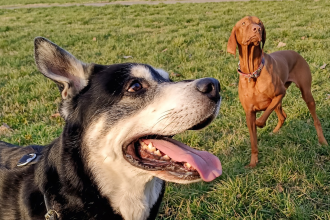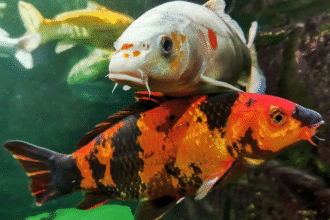All pet parents are aware of the importance of cleaning after their pooches. Well, this may not exactly come under the benefits of owning a dog, but is an important subject.
No matter how you choose to pick up after your pet, it’s unlikely to be a glamorous task. What’s most important is ensuring that you do it the proper way. Otherwise, you could run the risk of making your space hazardous.
There are many ways dog owners choose to deal with their pupper’s excretions. This article will discuss all the wrong ones along with their reasons. Towards the end, we will also discuss the right and safe practices to follow.
Wrong Ways to Clean Dog Poop
Did you know that dogs in America produce more bodily waste in 2024 than humans did back in 1959? Yes, as much as 11 million tons of poop end up in landfills each year.
This is not just because of the dog population, but the fact that canines poop more per day than the average human. With such gargantuan volumes ending up in landfills, it’s important to straighten things out on an individual level.
Every pet parent must ask if they’re disposing of pet waste properly. Listed below are five wrong ways to do so.
Flushing Down the Toilet
If you’re raising an eyebrow reading this point, you probably don’t participate in flushing dog poop down the toilet. The shocking part is that many people do attempt this method, some even with a plastic bag!
The thumb rule is to never do this. Dog waste contains many kinds of harmful bacteria. According to Scoop Soldiers, the most common ones are E.coli, Salmonella, and Giardia.
Now, let’s see how harmful these bacteria are to humans. According to the Cleveland Clinic, E.coli can lead to urinary tract infections, meningitis, and pelvic inflammatory disease. As for Salmonella, the Mayo Clinic states that it increases the risk of reactive arthritis.
Giardia can lead to gastrointestinal infections. When pet waste is flushed down, it tends to clog pipes and damage sewage treatment plants. The aforementioned contaminants can enter into the municipal water supply, thereby increasing the risk of health issues.
Allowing it to Decompose
A second group of pet parents tend to do nothing or use minimal effort. This group believes that it’s a good idea to allow dog poop to decompose naturally.
Some may even use it as a compost for their garden. Both are wrong ways because of how toxic dog waste can be. Besides the health risk, the nitrogen and phosphorus content in dog poop can damage soil and plant roots.
Plus, if the waste is buried in shallow soil, it can get washed away into waterways through rain. Finally, the natural decomposition process can emit a foul odor, so it’s best not to let nature take over.
Using Harsh Chemicals
Another wrong way pet parents try to clean off their pooch’s waste is the use of harsh chemicals. This should also be avoided at all costs because the chemicals act as poison for the dog.
Your pet may come in contact with them while playing around, thereby developing irritation or poisoning. According to PetMD, some toxic cleaning products that may harm a dog’s health include chlorine, bleach, formaldehyde, and ammonia.
Using Only Water to Wash Off
This one may seem logical on the surface but is an incomplete process of cleaning. Most pet parents pick up after their pets and clean the area with water.
As a natural solvent, water is a cleansing agent but it’s not enough to wash off the microbes found in dog waste. The risk to public health and water sources remains.
Instead, it’s best to use dedicated pet waste bags to pick up after your pet. Then, clean the area with a relevant eco-friendly cleaning solution.
Attempting to Bury it in Shallow Ground
This practice is a little similar to that of waiting for natural composting. Some pet parents may not let the dead bury their own dead but they make frantic attempts to intervene.
In other words, they dig up a specific area’s ground and bury their pet’s poop. The thought process behind this usually has to do with allowing nature to take over.
The waste will indeed decompose into the soil over time. Even in good conditions, it may take up to two months for that to happen. Besides the scare of waste piling up beneath the yard, the problem is the different parasites and bacteria found in dog poop.
These harmful pathogens can live in the soil for up to four years. Even under the best compost conditions, ttheydo not die easily., whichcan pose a health hazard for humans.
Safe and Hygienic Practices
Now that we’ve discussed all the wrong ways pet parents tend to dispose of their dog’s waste, let’s talk about safe practices. If you’re at a public place or a park, the safest way of disposal is to pick up the poop with a biodegradable trash bag and throw it into a designated bin.
If a designated composting system is available in the area, that can also be used to dispose of the bag. The same can be done while at home but just picking up after the pet won’t suffice. Traces of bacteria will still be found in the area and they will produce unpleasant odors over time.
Scheduled professional cleaning is the safest and most hygienic option. BIn addition tocleaning the immediate mess, the experts will thoroughly sanitize the area. Your home and its surroundings will stay clean at all times without any danger of malodorous corners.
Could you identify with any of the incorrect poop scoop practices we just discussed? If yes, it’s never too late to make a one-eighty. Dispose of your dog’s waste the right way and maintain your home’s cleanliness and hygiene.














